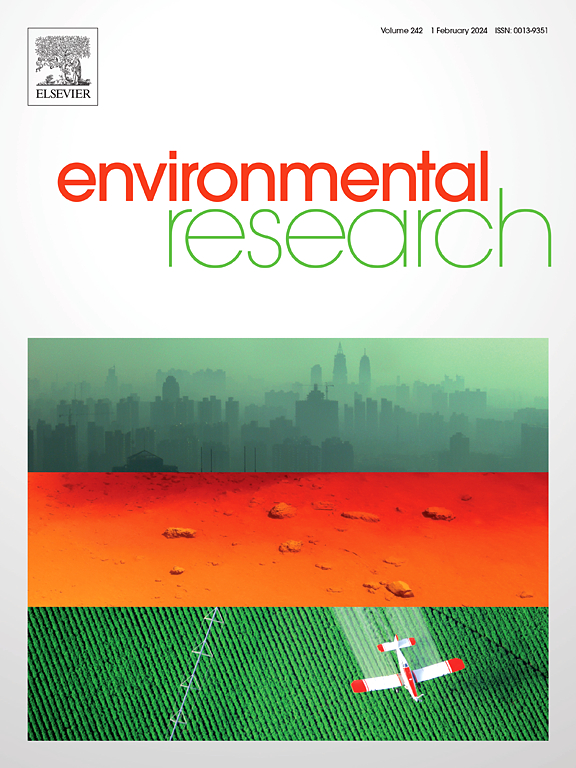The cytotoxicity of photoexcited CdS in an E. coli-CdS hybrid system and the roles of the sacrificial agent to reduce this toxic effect
IF 7.7
2区 环境科学与生态学
Q1 ENVIRONMENTAL SCIENCES
引用次数: 0
Abstract
This study investigates the biosynthesis of CdS nanoparticles (NPs) by Escherichia coli CD-2 to develop an E. coli-CdS hybrid system. The hybrid system was exposed to light in the presence and absence of cysteine (Cys) as a sacrificial agent. The finding revealed that in the absence of Cys, photo-induced holes led to a sharp increase in oxidative stress, disrupting the oxidative/antioxidative balance within bacterial cells. Consequently, cellular components were oxidized under elevated oxidative stress, lending to functional loss. This oxidative damage resulted in reduced cell viability, and in severe cases, cell disruption. Fortunately, the inclusion of the sacrificial agent alleviated these toxic effects. Cys quenched the photo-induced holes, markedly lowering oxidative stress within the cells. This mitigation enabled the maintenance of essential cellular functions during treatment. The majority of bacterial cells preserved their vitality and utilized the extra photoelectrons for cell growth under these conditions.

光激发CdS在大肠杆菌-CdS杂交系统中的细胞毒性及牺牲剂在降低这种毒性作用中的作用。
本研究利用大肠杆菌CD-2合成CdS纳米颗粒(NPs),建立大肠杆菌-CdS杂交体系。将杂交体系暴露在有半胱氨酸(Cys)和没有半胱氨酸(Cys)作为牺牲剂的光下。这一发现表明,在缺乏Cys的情况下,光诱导的孔导致氧化应激急剧增加,破坏了细菌细胞内的氧化/抗氧化平衡。因此,在氧化应激升高的情况下,细胞成分被氧化,导致功能丧失。这种氧化损伤导致细胞活力降低,在严重的情况下,细胞破坏。幸运的是,牺牲剂的加入减轻了这些毒性作用。Cys猝灭了光诱导的空洞,显著降低了细胞内的氧化应激。这种缓解能够在治疗期间维持基本的细胞功能。在这些条件下,大多数细菌细胞保持了活力,并利用多余的光电子进行细胞生长。
本文章由计算机程序翻译,如有差异,请以英文原文为准。
求助全文
约1分钟内获得全文
求助全文
来源期刊

Environmental Research
环境科学-公共卫生、环境卫生与职业卫生
CiteScore
12.60
自引率
8.40%
发文量
2480
审稿时长
4.7 months
期刊介绍:
The Environmental Research journal presents a broad range of interdisciplinary research, focused on addressing worldwide environmental concerns and featuring innovative findings. Our publication strives to explore relevant anthropogenic issues across various environmental sectors, showcasing practical applications in real-life settings.
 求助内容:
求助内容: 应助结果提醒方式:
应助结果提醒方式:


